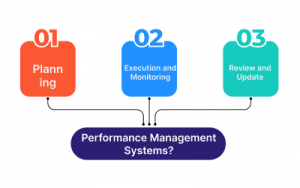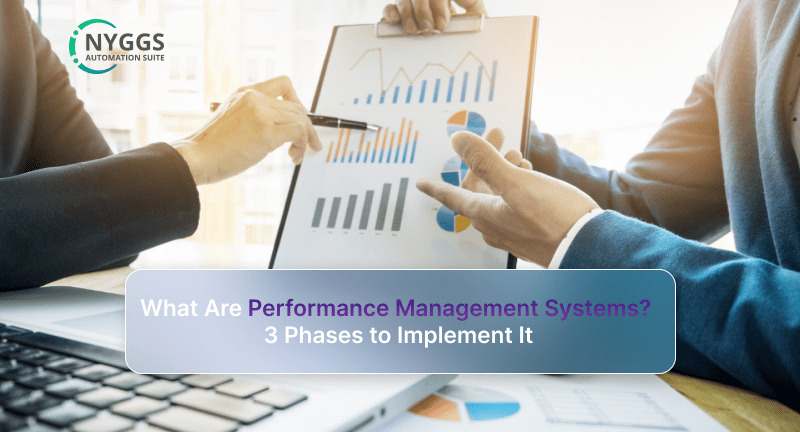While performance management is an essential part of Human Resources. It is not always successful in implementing the most effective model that best meets company needs.
This management is a method used by HR to measure employees’ performance, although other factors also play a role. Employee evaluation is, therefore, a priority for those in charge of HR.
Most organizations downplay the importance of routine management and don’t have an effective system. Incorrect management can negatively affect a company’s productivity and competitiveness. How can we ignore the importance of performance management systems?
Brief Details of Performance Management Systems
Performance Management Systems are the combination of technologies and methodologies to assess the routine of workers. Employee performance management systems comply with a set of procedures, techniques, and criteria within a company to score employees’ performance.
In many ways, the employee management system influences the company’s own management. As it determines promotions, hiring needs, or other changes to the organization’s human resources management.
Importance of Performance Management Systems
In line with the above, performance management in Human Resources should help both the company and the employees. For organizations, the importance of management lies in the fact that it is the most effective way to influence the work routine of the workforce, helping to achieve or exceed the objectives set.
But workers can also benefit from the implementation of a good management system. The availability of evaluation indicators, for example, helps workers to be more efficient in their tasks while knowing exactly what the company expects of them.
The implementation of evaluation software is a key point in any digital transformation plan and an unavoidable step to optimize such a sensitive procedure as much as possible. The evaluators have centralized access to the information, they can enter all the indicators they deem appropriate and, in addition, they will have always updated statistics.
Advantages of Implementing Employee Performance
The foundation of organizational concert improvement is NYGGS Employee Performance Management Systems, which sometimes become complex due to confusion and a few errors. As a result, it needs the core attention of any human resource management model, allowing them to take advantage it offers:
- An effective tool for communicating the organization’s values, priorities, and objectives.
- Creating a channel for clarifying mutual expectations.
- A frame of reference to guide daily and constructive feedback, strengthening relationships on a day-to-day basis.
- A means to identify strengths and opportunities for improvement at work.
- The benchmark for focusing investment in training and development on the organization’s performance improvement needs.
Performance Management vs. Performance Evaluation
The previous sections have led to the conclusion that routine management and job routine evaluation seems to be almost equivalent concepts. This is true to a large extent, but in reality, they refer to different areas within talent management.
It is a global strategy of which evaluation itself is just one more pillar. The project involves overseeing evaluation processes, planning actions to maximize employee performance, and improving the management of human talent in general.
Performance evaluation, on the other hand, is perhaps the most visible and decisive aspect of routine management, as it consists of specific tests for determining job concert and its conditions. This would also include, for example, the preparation of Feedback for employees.
What Are the Three Phases of Performance Management?
The three phases of performance management are Planning, Execution & Monitoring, and Review & update. As in any other long-term strategy, PMS management includes phases whose duration is hard to determine, since each company will have its own means for implementing the strategy. However, each phase can be distinguished by its distinct actions.

1. Planning
What exactly do you hope to achieve by implementing a performance management system? The company should define its objectives and performance indicators as clearly as possible. At the same time, it is time to establish a calendar of all the actions or, at least, the most important ones.
2. Execution and Monitoring
There are a number of important aspects of the management system to execute, including assessment tests, meetings, data analysis, and employee feedback (much-needed feedback).
3. Review and Update
As nothing is set in stone, PM System should always remain flexible, meaning should be permanently open to change.
Conclusion
Any high-routine organization requires an enterprise performance management system to connect the planning and execution of business strategy. However, finding the winning combination of standards, criteria, and processes that allow leaders and employees to evaluate results and behaviors is not easy. A good integration with the company’s strategy and culture is required, as well as everyone’s commitment to its application.
If you want your organization to become high-routine and improve your performance management system, we can help you. At NYGGS, we put at your disposal our expert knowledge and experience in the design and implementation of this type of system. We respond to your challenges with solutions with the NYGGS Employee Management System.


